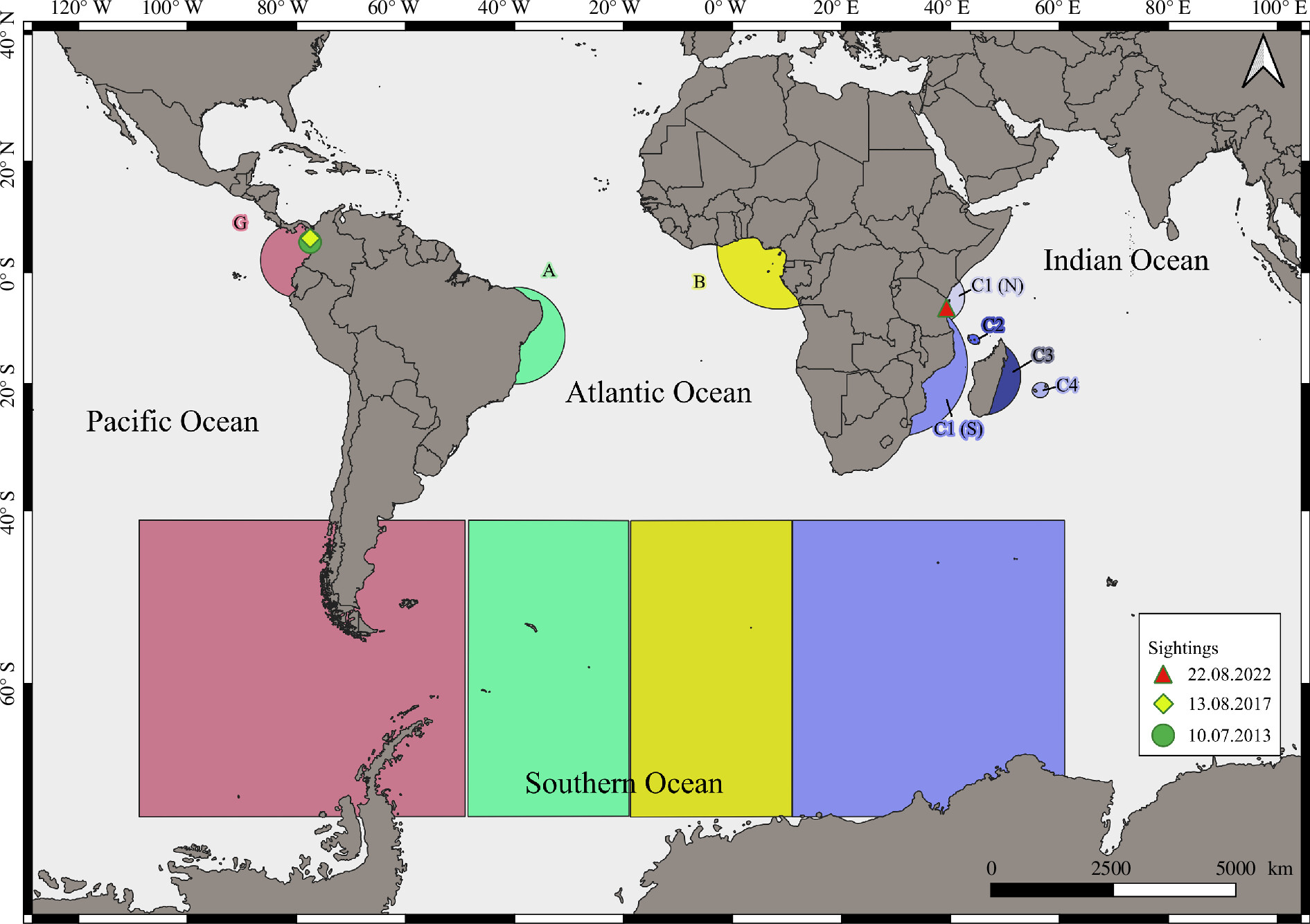Some species are well known for the distances they are able to cover: from birds that fly pole to pole, butterflies making incredible journeys, and silky sharks breaking records, these feats never fail to impress. New research has highlighted an individual humpback whale that has traveled one of the longest migration routes ever seen, though the driving forces behind this might spell bad news.
An adult humpback whale was first photographed in 2013 off the Gulf of Tribugá on the Pacific coast of Colombia, as part of a group with seven other humpbacks. The whale was then spotted in 2017 at Bahía Solano, off the coast of Colombia in the Pacific Ocean, around 78 kilometers (48 miles) from the location where it was first seen. Five years later, in August 2022, the whale reappeared off the coast of Zanzibar in the Indian Ocean, over 13,000 kilometers (8,000 miles) away from the original sighting.
Ekaterina Kalashnikova, first author of the study, told the BBC the finding was “truly impressive and unusual even for this highly migratory species”.

Most breeding and feeding grounds stay color coordinated but the shapes indicate the whale sightings.
Humpback whales (Megaptera novaeangliae) have one of the longest migrations of any mammal in the first place, traveling from tropical breeding grounds to colder feeding grounds with the season. Some can cover a distance of around 8,000 kilometers (5,000 miles) during this migration. This migration is referred to as latitudinal as they swim north to south or vice versa between areas. What is unusual, however, is longitudinal movement, swimming east to west across the world’s oceans.
The researchers describe the metric they use to measure as “the shortest distance between two sightings – the great-circle distance – considering the spherical surface of the Earth.” The sightings in Zanzibar and Colombia are separated by a 13,046-kilometer (8,106-mile) great circle distance and 120 degrees of longitude. This is the longest recorded great circle distance between sightings and the first record of a humpback whale alternating breeding grounds between the Pacific and Indian Oceans.
The team uploaded images of the whale onto the site Happywhale, which allowed them to see how far individuals have traveled and where different whales have been seen.
“This was a very exciting find, the kind of discovery where our first response was that there must be some error,” Ted Cheeseman, co-author of the study, told LiveScience.
The researchers wanted to consider the potential motivations that could have caused the whale to swim so far. They suggest that global climate change could have impacted the krill distribution in the feeding grounds, prompting the whale to travel further in search of food.
The second possible explanation is that the male humpback was looking for love. Typically, humpbacks are loyal to their feeding grounds with few individuals choosing to move between them. Previous research has suggested that females might go looking for love in different areas, or even younger males, which is a little at odds with the journey this slightly older male whale undertook.
The study is published in Royal Society Open Science.
Source Link: Record-Breaking Humpback Whale Swims Over 13,000 Kilometers For Food And Love